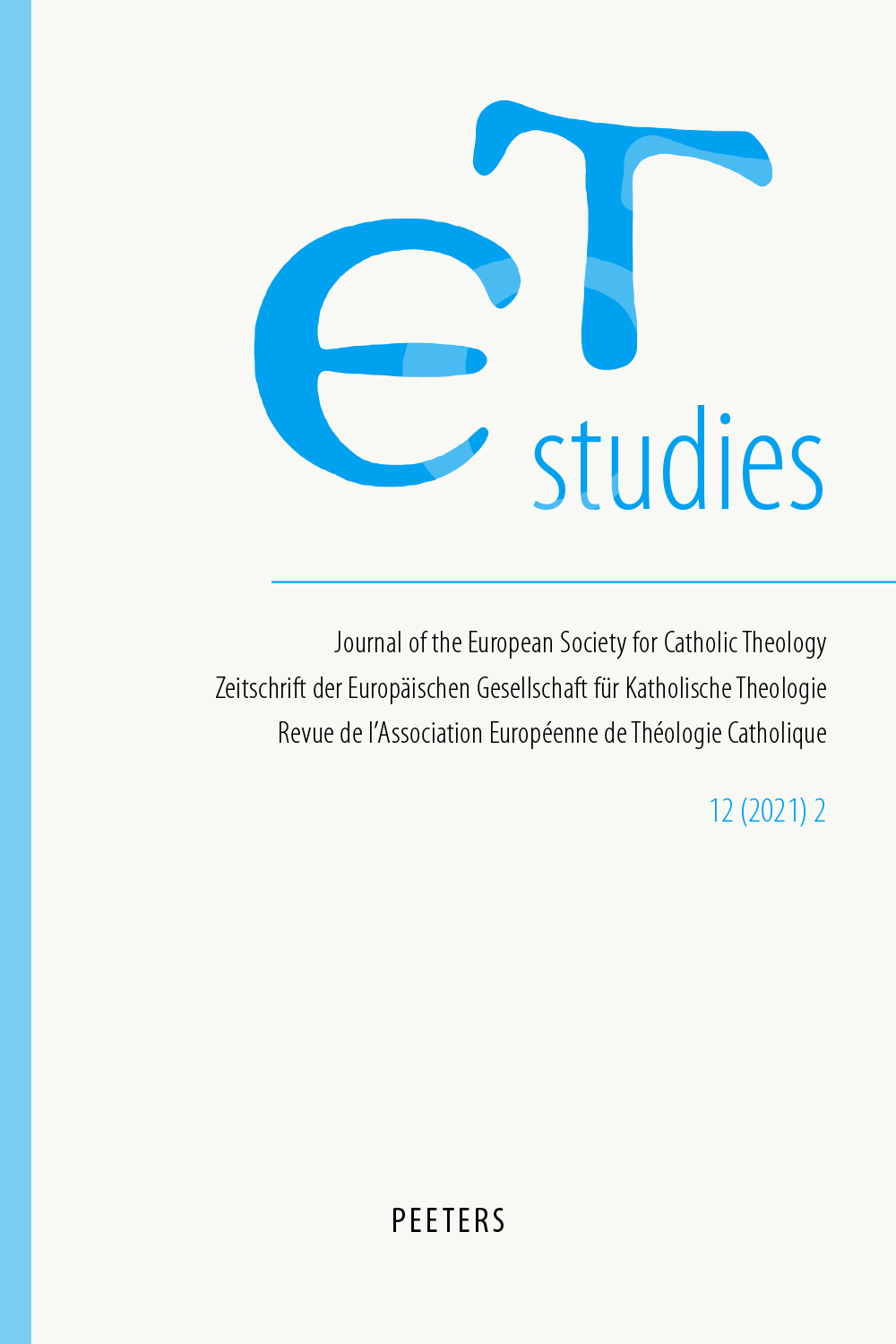 previous article in this issue previous article in this issue | next article in this issue  |

Preview first page |
Document Details : Title: Gleichheit und/oder Differenz Subtitle: Gottbildlichkeit gendersensibel Author(s): WENDEL, Saskia Journal: ET-Studies Volume: 8 Issue: 1 Date: 2017 Pages: 25-40 DOI: 10.2143/ETS.8.1.3206570 Abstract : Der Beitrag setzt sich mit dem Motiv der Gottbildlichkeit als Legitimationsbasis eines innerkirchlichen und gesellschaftlich geführten Machtdiskurses um sexuelle Differenz auseinander. Dabei geht es um das Verhältnis von Gottbildlichkeit und Zweigeschlechtlichkeit in traditionellen theologischen Anthropologien: Zum einen wird die Gottbildlichkeit anthropologisch dazu verwendet, von einem unveränderlichen, von Gott geschaffenen Wesen im Menschen auszugehen (substanzmetaphysisches Paradigma). Damit geht einher, dass der Mensch seinem Wesen nach leben muss, um dieses zu realisieren und Gottes Willen zu folgen. Zum anderen wird von einer zweigeschlechtlichen, von Gott gegebenen Schöpfungsordnung (sexuelle Differenz als Ursprungskategorie) ausgegangen, deren Auflösung als 'widernatürlich' angesehen wird. Diese Bestimmungen konstruieren ein Machtverhältnis, welches durch einen gendersensiblen Umgang mit dem Motiv der Gottbildlichkeit aufgebrochen werden kann. Durch Reflexionen über das Verständnis des menschlichen Selbstverständnisses als Struktur bewussten Lebens wird die These einer prinzipiellen Gleichheit menschlichen Daseins entwickelt sowie der Einfluss der Konstruktion von 'Gender' auf die Konstruktion von 'Sex' analysiert. This contribution discusses the motive of the image of God as a basis for the legitimation of a power discourse about sexual difference in the church and society. The point is the relation between the concept of the image of God and the idea that there are two sexes in traditional theological anthropologies. On the one hand, in anthropology the concept of the image of God is used to start from the idea of an unchangeable nature of what it is to be human created by God (within a paradigm of a substantialist metaphysics). This is linked to the idea that people must live according to this nature, realizing it and following the will of God. On the other hand, this position is based on the idea of a two-sexed order of creation (sexual difference as a basic category). Its dissolution would be 'unnatural'. These determinations make up a power relation that can be broken by using the motif of the image of God that is sensitive to gender. Through reflecting on the understanding of human identity as a structure for conscious life, the thesis of the fundamental equality of human beings is developed and the influence of the construction of 'gender' on the construction of 'sex' is analysed. Cette contribution conteste que le motif de l’image de Dieu soit la base de légitimation d’un discours de pouvoir sur la différence sexuelle dans l’Église et la société. Elle porte sur la relation entre le concept d’image de Dieu et l’idée qu’il y a deux sexes dans les anthropologies théologiques traditionnelles. D’un côté, en anthropologie, le concept de l’image de Dieu est utilisé pour partir de l’idée d’une nature immuable de ce qu’est être un humain créé par Dieu (selon un paradigme de métaphysique substantialiste). Cela est lié à l’idée que les gens doivent vivre selon cette nature, en la réalisant et en suivant la volonté de Dieu. D’un autre côté, cette position est basée sur l’idée d’un ordre bi-sexué de la création (la différence sexuelle étant une catégorie fondamentale). Sa disparition serait «contraire à la nature». Ces déterminations constituent une relation de pouvoir qui peut être cassée par le recours au motif de l’image de Dieu sensible au genre. C’est en réfléchissant à la manière de comprendre de l’identité humaine comme une structure pour une vie consciente que l’on peut développer la thèse de l’égalité fondamentale entre les humains et analyser l’influence de la construction du «genre» sur la construction du «sexe». |
 |


